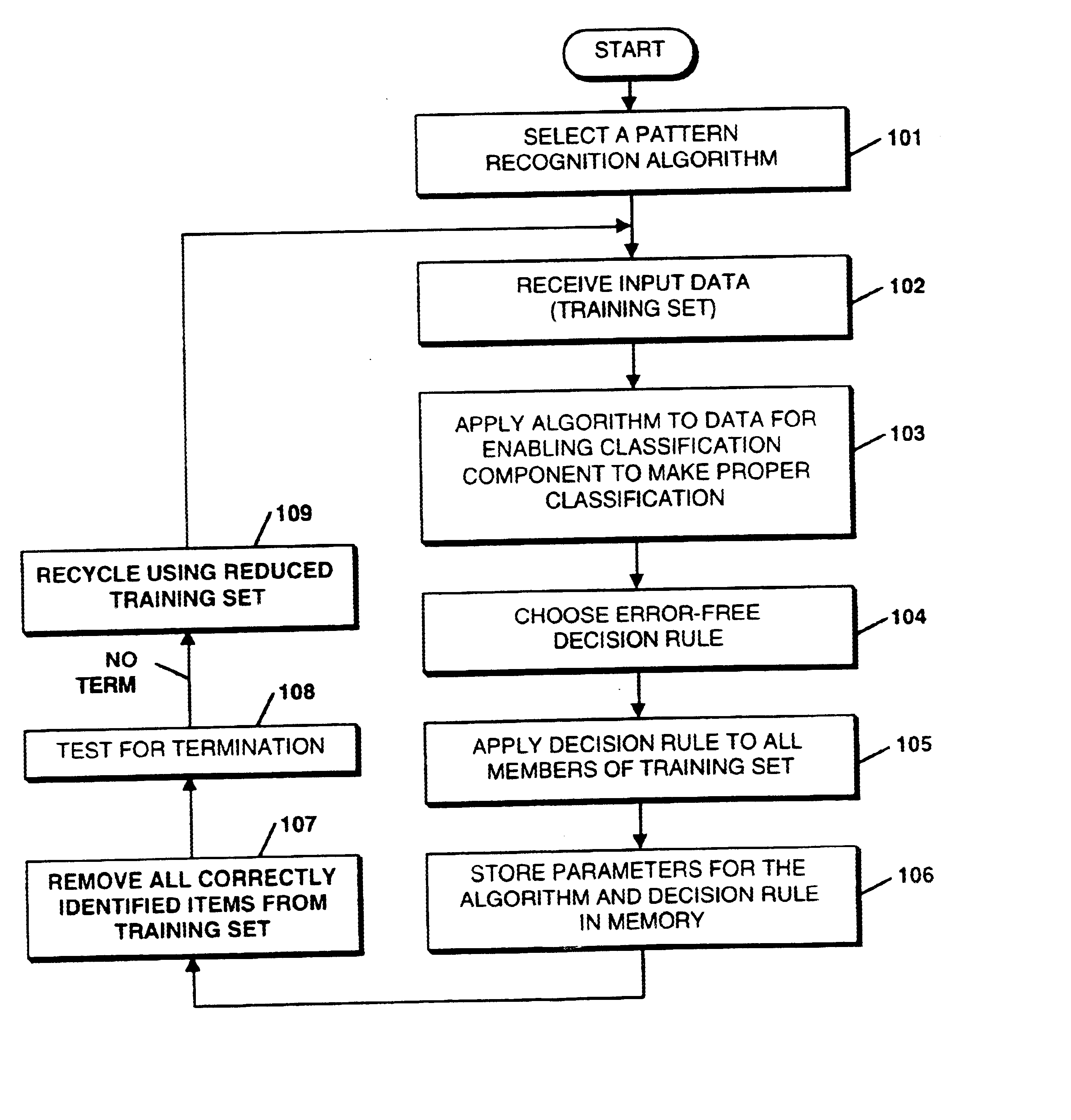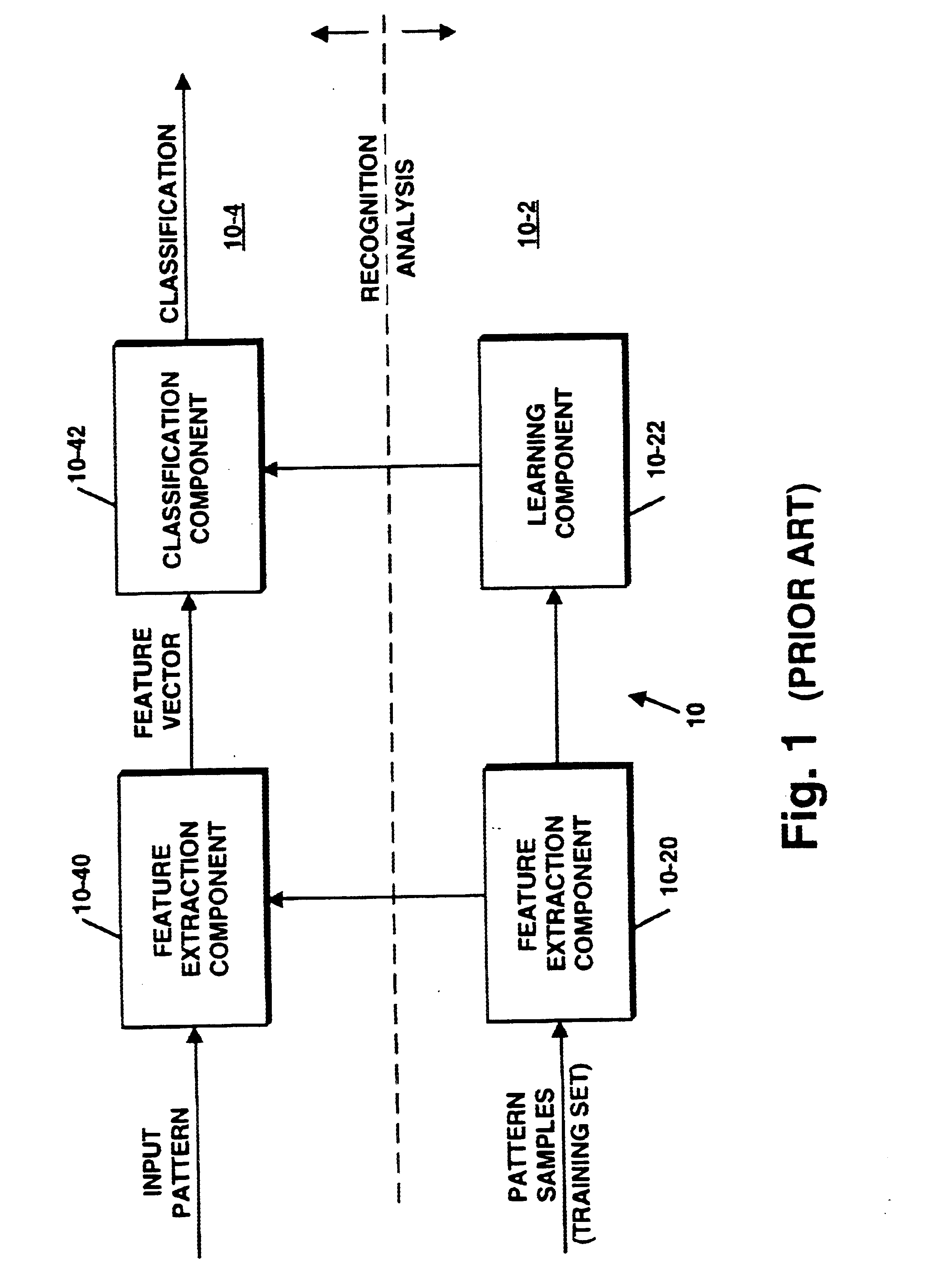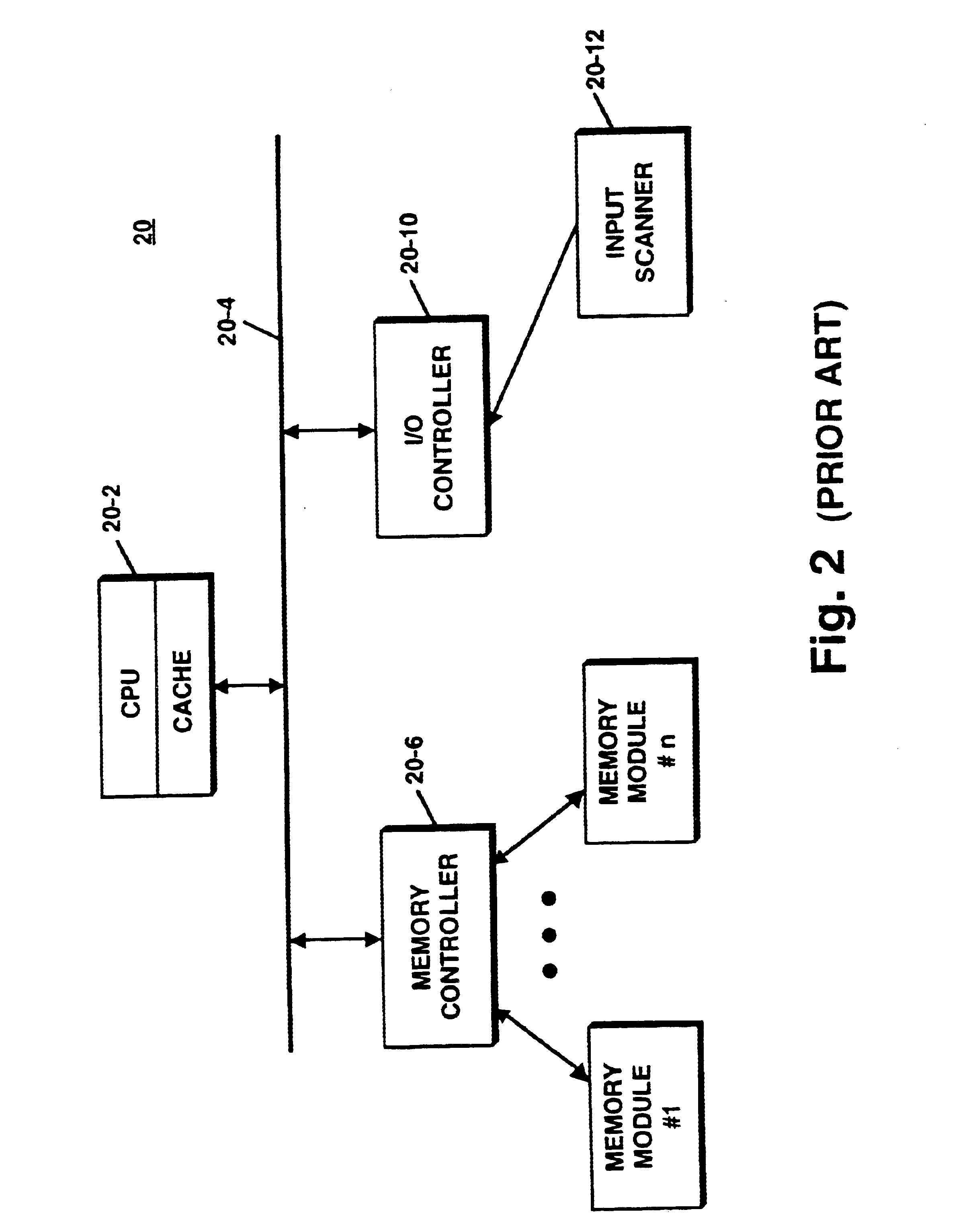Method and system for improving pattern recognition system performance
a pattern recognition and performance improvement technology, applied in the field of pattern recognition systems, can solve the problems of insufficient real-world application, complex and cumbersome approaches, and system not designed to perform error-free decisions, and achieve the effect of increasing the robustness of the recognition system and more system robustness
- Summary
- Abstract
- Description
- Claims
- Application Information
AI Technical Summary
Benefits of technology
Problems solved by technology
Method used
Image
Examples
Embodiment Construction
FIG. 1 is a block diagram of a conventional pattern recognition system 10 that includes two major sections 10-2 and 10-4. Section 10-2 performs an analysis function while section 10-4 performs the recognition function. As shown, section 10-2 includes a feature selection component 10-20 and a learning component 10-22. Section 10-4 includes a feature extraction component 1040 and a classification component 10-42.
Feature Extraction and Section Components
As known in the art, what features are extracted and how this is accomplished depend on the patterns and the number of classes under scrutiny. Generally, extraction and selection methods follow one of two types of schemes. A first scheme is feature space transformation process wherein the system components transform original feature space into lower dimensional spaces for pattern representation and / or class discrimination. In the case of pattern representation, systems often use least-mean-square error and entropy criteria in determinin...
PUM
 Login to View More
Login to View More Abstract
Description
Claims
Application Information
 Login to View More
Login to View More - R&D
- Intellectual Property
- Life Sciences
- Materials
- Tech Scout
- Unparalleled Data Quality
- Higher Quality Content
- 60% Fewer Hallucinations
Browse by: Latest US Patents, China's latest patents, Technical Efficacy Thesaurus, Application Domain, Technology Topic, Popular Technical Reports.
© 2025 PatSnap. All rights reserved.Legal|Privacy policy|Modern Slavery Act Transparency Statement|Sitemap|About US| Contact US: help@patsnap.com



